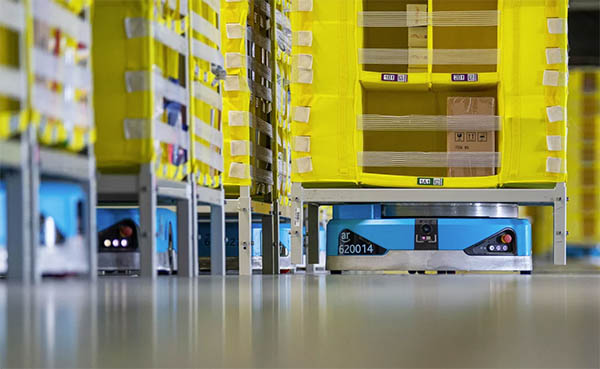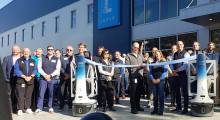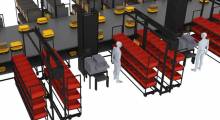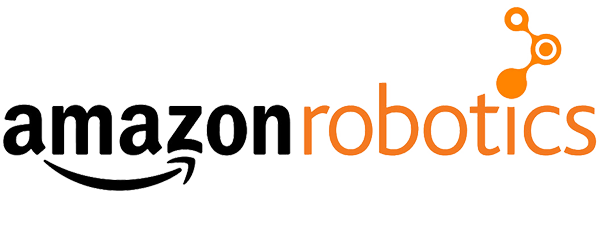When Amazon.com Inc. acquired Kiva Systems Inc. in 2012, it pulled the shelf-moving robot off the market for in-house use only. This forced retailers, warehouses, and logistics providers to turn to other suppliers, ultimately leading to the fast-growing mobile robot market.
“While the Kiva acquisition kickstarted the use of robotics and other technology at our facilities, it was just the start of our robotics journey,” wrote Amazon in a blog post. “We continued to innovate in new and exciting areas to improve the customer and employee experience and create an even safer workplace. And that innovation continues.”
In conjunction with its re:MARS event today, Amazon announced Proteus, its first fully autonomous mobile robot (AMR), as well as the Cardinal robotic workcell, the Amazon Robotics Identification (AR ID) for package scanning, and the Containerized Storage System. To learn more about each system, see the slideshow at right.
New systems join existing robot fleet
The Seattle-based e-commerce company noted that it has used more than 520,000 robotic drive units and hired over 1 million people worldwide in the past decade. It already uses more than a dozen types of robots, including robotic arms and grippers, delivery drones, and mobile robots, some of which were developed by its Amazon Robotics division.
Through its Amazon Web Services (AWS) unit, the company also integrates robots, artificial intelligence, and the Internet of Things (IoT). In October 2021, Amazon Robotics announced that it was opening a new robot manufacturing facility in Westborough, Mass.
Amazon said its four new systems are intended to improve ergonomics and warehouse working conditions. They have been a point of controversy and an impediment to retention and recruitment, even as labor shortages affect nearly every industry.
In addition to robots for safer and more efficient fulfillment centers, Amazon at re:MARS discussed Space ROS, a version of the open-source Robot Operating System to accelerate space exploration (see video below).
Article topics
Email Sign Up





















